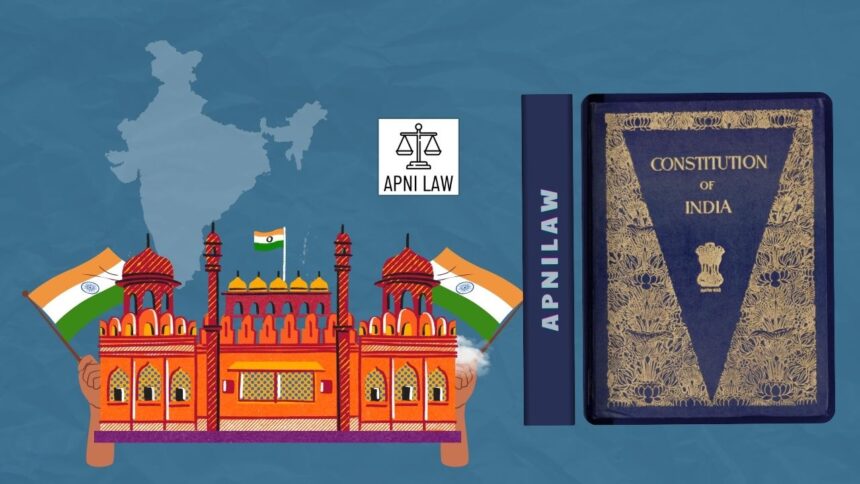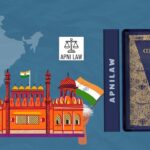Introduction
India’s federal structure is unique, combining both diversity and unity within a constitutional framework. While most parts of the country are organized into states with their own governments, certain regions are classified as Union Territories. These territories do not enjoy the same level of autonomy as states, as they are directly administered by the Union Government. The framers of the Constitution introduced this model to ensure flexibility in governance, recognizing that some areas required a different administrative approach due to their size, history, culture, or strategic significance.
Union Territories hold a special place in Indian democracy. Some of them were created for reasons of national security, others for administrative convenience, and still others because of cultural and historical distinctiveness. Over the decades, their governance structures have evolved. Some Union Territories have been granted legislatures and partial statehood, while others remain under direct central rule. Understanding their special status provides insight into how the Indian Constitution balances diversity with unity.
Constitutional Basis of Union Territories
The Constitution lays down the provisions for Union Territories in Part VIII, from Articles 239 to 241. These articles empower the President of India to administer Union Territories through administrators appointed by him, often referred to as Lieutenant Governors. Unlike states, whose powers flow from the federal structure, Union Territories derive their authority from the Union itself. Parliament has the power to decide what kind of governance each Union Territory will have.
This flexibility allows different models of administration. For example, Delhi and Puducherry have their own elected legislatures, while territories like Chandigarh and Lakshadweep remain directly under the Union Government. The Constitution therefore treats Union Territories as a special category, ensuring that governance adapts to their individual needs.
Reasons Behind the Creation of Union Territories
Union Territories were not created arbitrarily. Their existence stems from practical considerations. Certain territories were strategically important, such as the Andaman and Nicobar Islands and Lakshadweep, which play vital roles in maritime security. Some regions had cultural and historical distinctiveness, such as Puducherry, which carried a French colonial legacy and required a unique administrative setup. Other regions were too small to function as independent states, such as Chandigarh, which serves as the shared capital of Punjab and Haryana. Delhi, being the national capital, required a governance model that balanced local representation with national interest.
These reasons highlight the adaptability of the Indian Constitution. Union Territories reflect the foresight of the framers, who realized that a uniform administrative model would not work for every part of the country.
Union Territories with and without Legislatures
Today India has eight Union Territories, but not all of them are governed in the same way. Delhi, Puducherry, and Jammu and Kashmir have legislatures that allow their people to elect representatives and pass laws on certain subjects. However, even in these territories, critical areas such as law and order, police, and land remain under the Union Government. Other Union Territories such as Chandigarh, Ladakh, Lakshadweep, and the Andaman and Nicobar Islands continue to be administered directly by the Centre without legislative assemblies.
This distinction reveals the flexibility built into the system. While some regions enjoy greater local representation, others remain under central control, depending on their importance, size, and political history.
Delhi’s Special Status
Delhi, officially called the National Capital Territory of Delhi, provides one of the most interesting examples of Union Territory governance. The 69th Constitutional Amendment of 1991 granted Delhi a legislative assembly with limited powers. The assembly can legislate on matters in the state list, but issues of law and order, police, and land remain with the Union Government.
This arrangement has often led to conflicts between Delhi’s elected government and the Lieutenant Governor. The Supreme Court in its 2018 judgment clarified that the Lieutenant Governor must act on the aid and advice of the elected government in most matters. This decision reinforced the democratic spirit while maintaining the central government’s authority over sensitive areas. Delhi’s case shows how Union Territories reflect the constant balancing act between autonomy and national interest.
Jammu and Kashmir: From Statehood to Union Territory
A major constitutional development took place in 2019 when Jammu and Kashmir was reorganized. The abrogation of Article 370 and 35A removed the state’s special status, and the region was bifurcated into two Union Territories: Jammu and Kashmir with a legislature, and Ladakh without one. This was a significant assertion of the Union’s authority under Article 3 of the Constitution, which empowers Parliament to reorganize states.
Supporters argue that the reorganization ensures better governance and stronger national integration. Critics, however, contend that reducing a state to Union Territory status undermines federal principles. The development remains one of the most debated moments in India’s constitutional history.
Evolution of Union Territories
Union Territories have never been static. Several of them were later elevated to full statehood. Himachal Pradesh, Manipur, Tripura, Arunachal Pradesh, and Goa all began as Union Territories before becoming states. This shows that Union Territory status often acts as a transitional phase, allowing the Union Government to stabilize governance in sensitive or smaller regions until they are ready for full autonomy.
The changing list of Union Territories demonstrates the Constitution’s adaptability. It allows India to manage diverse demands without compromising unity.
Federal Debate and Criticism
Union Territories frequently spark debates about federalism. Critics argue that their existence gives too much power to the Union Government, undermining the federal spirit. This concern is especially strong in cases like Delhi, where the elected government’s authority has often clashed with the Union-appointed Lieutenant Governor. The creation of Telangana through state reorganization reflects how Parliament holds ultimate power in such matters, while states have only consultative roles.
On the other hand, supporters argue that Union Territories are necessary for national security and administrative efficiency. Without this system, India might have faced greater instability in strategically or politically sensitive regions. The model reflects the framers’ belief that unity must be prioritized, even if it requires limiting state autonomy in certain cases.
Role of Union Territories in Indian Democracy
Union Territories play an important role in Indian democracy by showing how governance can be tailored to suit different regions. They ensure that smaller or sensitive regions receive effective administration without being overwhelmed by the challenges of full statehood. They also offer constitutional solutions to regional demands, preventing instability and conflict.
At the same time, they highlight the ongoing challenge of balancing central authority with democratic representation. By granting legislatures to some Union Territories, India has provided for local participation in governance, while retaining central control where necessary. This balance ensures that diversity is respected without weakening national unity.
FAQ Section
What are Union Territories in India?
Union Territories are regions directly administered by the Union Government, unlike states that enjoy greater autonomy under the Constitution.
How many Union Territories are there in India?
At present, India has eight Union Territories, with varying models of governance.
Which Union Territories have legislatures?
Delhi, Puducherry, and Jammu and Kashmir have their own legislatures with limited powers.
Can Union Territories be converted into states?
Yes, several Union Territories such as Himachal Pradesh, Goa, and Tripura later became states.
Why are some Union Territories important for national security?
Territories like Andaman and Nicobar Islands and Ladakh are strategically significant, which is why they remain under strong central control.
Conclusion
Union Territories represent one of the most distinctive features of India’s federal structure. They are designed to provide flexibility in governance, ensuring that regions with special needs or circumstances can be administered effectively. From Delhi’s partial statehood to the recent reorganization of Jammu and Kashmir, the model of Union Territories continues to evolve.
These territories demonstrate the adaptability of the Indian Constitution, which provides for multiple forms of governance within a single framework. While they sometimes raise debates about federalism and centralization, Union Territories also highlight India’s ability to reconcile unity with diversity. By striking this balance, they remain vital to sustaining democracy in the world’s largest and most diverse republic.








